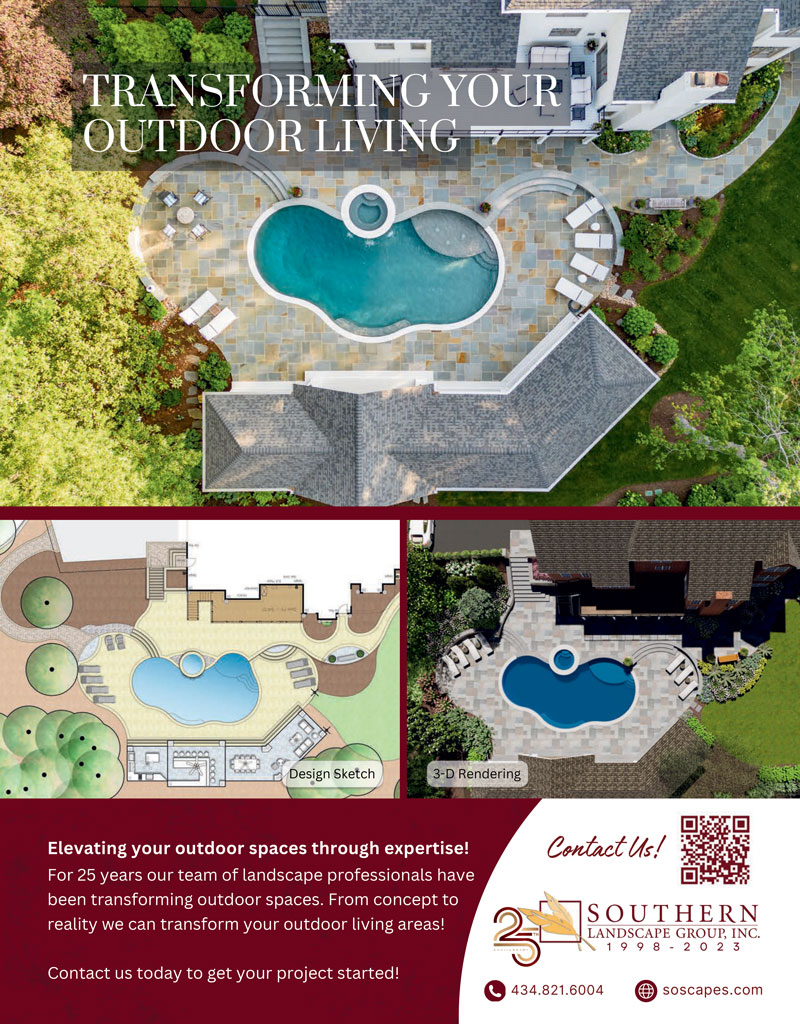Burning Bright: Fiery Features for Outdoor Spaces

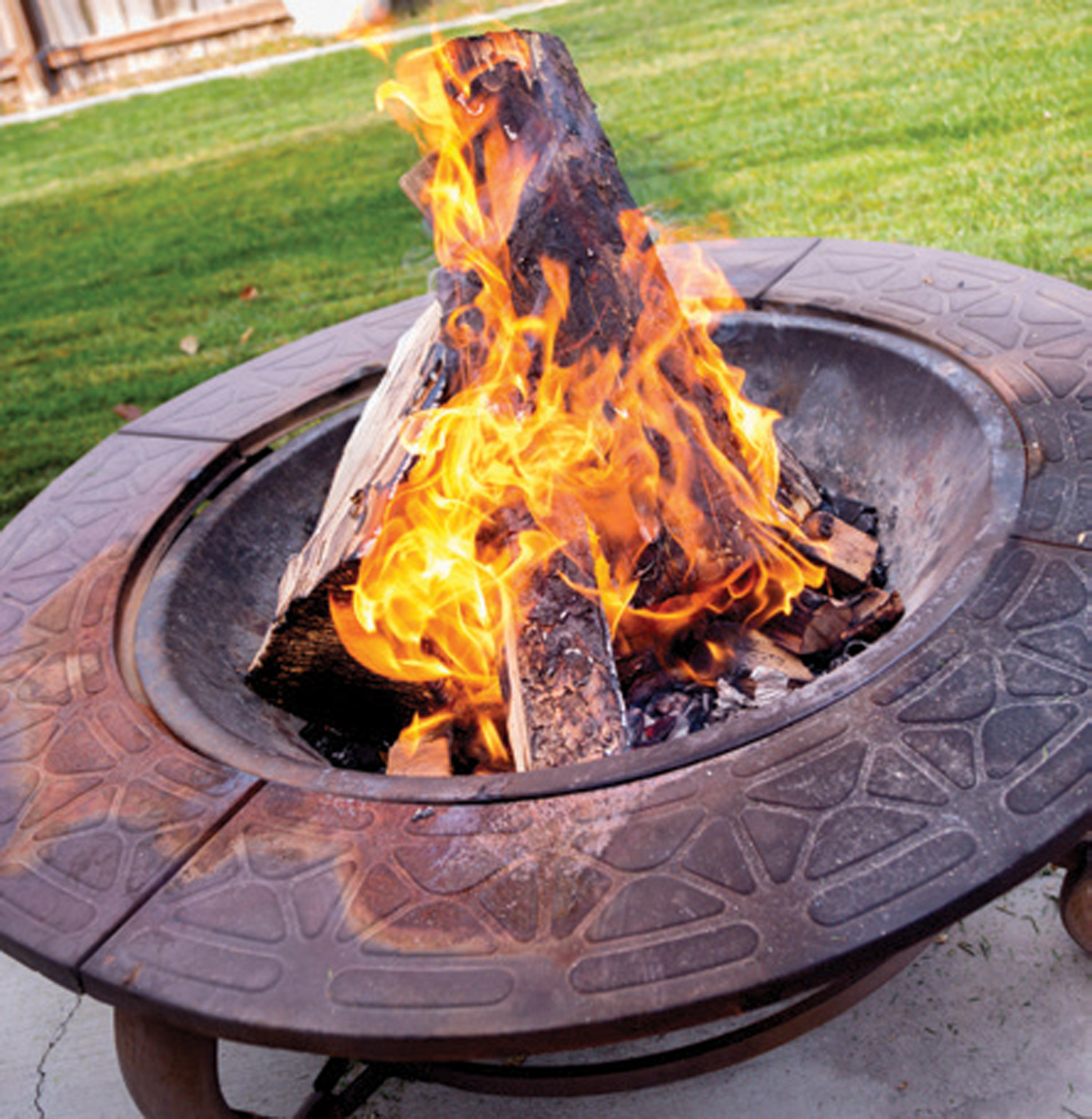 Fire is an essential element that provides heat for warmth and cooking. Fire also possesses an entertainment value, which, played with safely, can fascinate for hours—think bonfire. Imagine the fun of roasting marshmallows and drinking cider on a crisp, fall evening where fire is the feature—the center, core, heart of the gathering.
Fire is an essential element that provides heat for warmth and cooking. Fire also possesses an entertainment value, which, played with safely, can fascinate for hours—think bonfire. Imagine the fun of roasting marshmallows and drinking cider on a crisp, fall evening where fire is the feature—the center, core, heart of the gathering.
Historically, using fire inside the home within a centrally located fireplace has allowed homeowners and guests to keep warm on wintry days. Today, an indoor fireplace is still a popular source of heat and often offers a distinct aesthetic appeal to its partakers. Because of its all-around appeal and function inside the home, fire often finds its way into outdoor spaces as homeowners decide to extend similar considerations outside the home.
When homeowners integrate a fire feature into their outdoor space, they find the benefits extremely satisfying. Indeed, an outdoor firepit or other type of fire feature offers lighting, warmth, and entertainment and allows homeowners to really use and enjoy their outdoor spaces in multiple seasons—particularly the fall, and throughout the year.
 Options
Options
Once homeowners decide to add a fire element to their outdoor spaces, they must consider the many options. “There are all kinds of things you can do with fire,” says Mark Maslow of Southern Landscape Group. The most popular options are firepits, also called fire bowls, and fireplaces. Firepits can be portable or built-in features. Although firepits come in a variety of sizes and shapes and are usually using a gas powered fire pit kit, for built-in firepits, homeowners often opt for a circular configuration, as opposed to square, in order to accommodate more people around the fire.
Other options for outdoor fire include tiki torches and fire walls. Tiki torches are a simple, inexpensive way to add ambiance to an outdoor area. Fire walls are literally walls of fire. They resemble fireplaces but are open to the air and do not have a chimney. Fire walls can add an aesthetic quality to patio areas, and they emit more heat than traditional firepits and fireplaces.
For modest budgets, homeowners might consider a DIY firepit kit or portable firepit. Often, these types of firepits are constructed of metal and can be purchased directly from a local home improvement store or online. Depending on the specifications, prices can range from under $100 and go up from there.
Larger budgets garner more choices, of course, and for more expansive projects, a hardscape with a built-in firepit, fire feature, or even a fireplace are all popular options. The hardscape is a complete outdoor area constructed of materials like concrete and stone, often in the form of a patio. As an extension of the house and the space inside the house, a hardscape should replicate the aura of the entire home landscape.
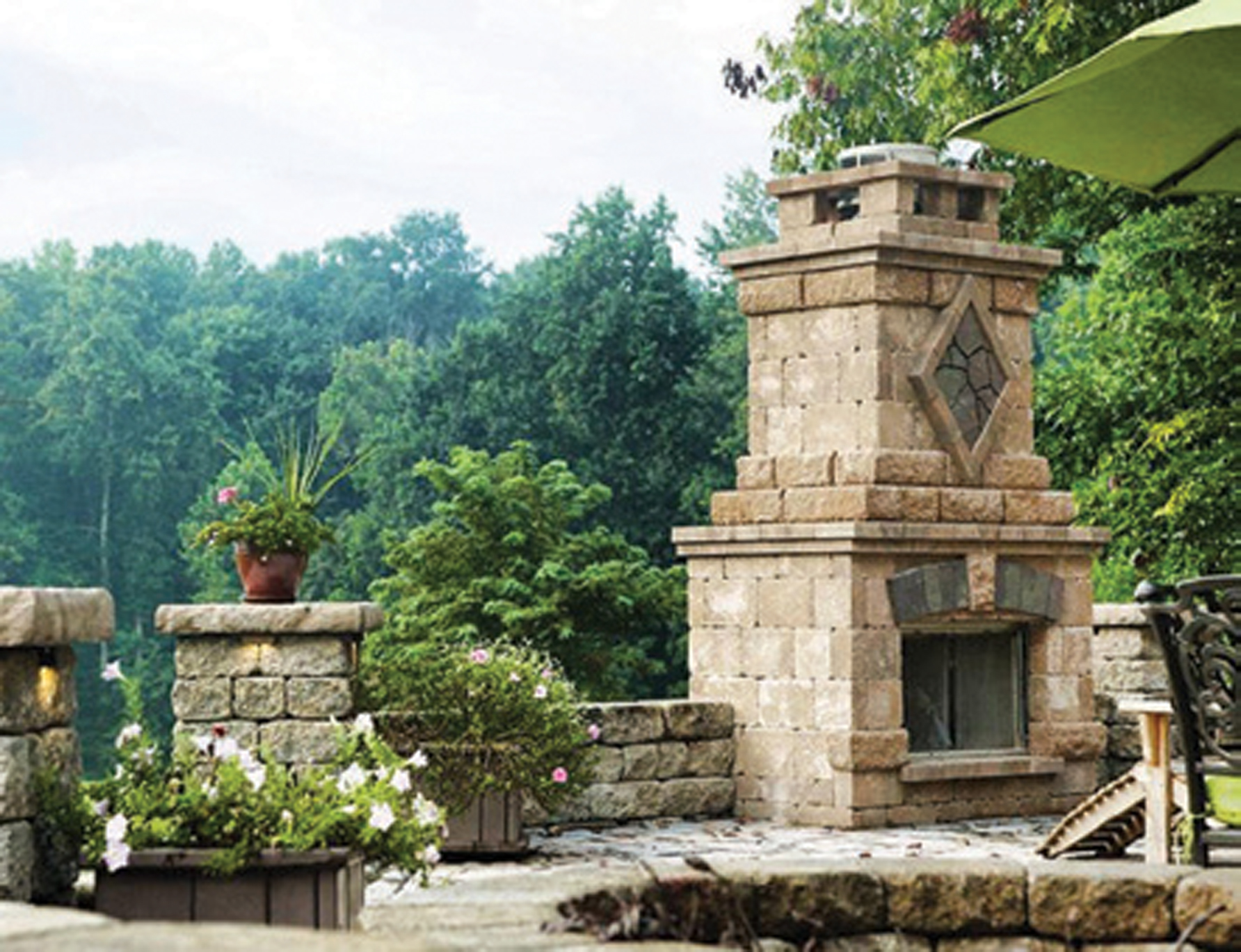 Considerations
Considerations
Intent, budget, space and safety are all things to consider when choosing to add fire to your outdoor space. According to Chris Templeton of CLC, Inc., “The main concern would be how people are going to use the [outdoor] area.” He adds, “Fireplaces are a lot more aesthetically pleasing most of the time” but are also “typically more expensive” than firepits.
There are two options for fueling the fire: gas or wood. Although gas has been a popular source for its cleanliness and ease of use, Templeton says, “Wood-burning is becoming more popular, and it’s mainly for the heat.” Wood-burning fire is a warmer source than fire fueled by gas. When homeowners consider their intentions for their space, they can make the best decision on fuel source.
According to Maslow, professionally installed, built-in firepits “can range from $3,000 to $6,000, depending on whether it’s gas-burning or wood-burning, and depending on how large it is.” Costs typically increase from there due to add-ons and other features.
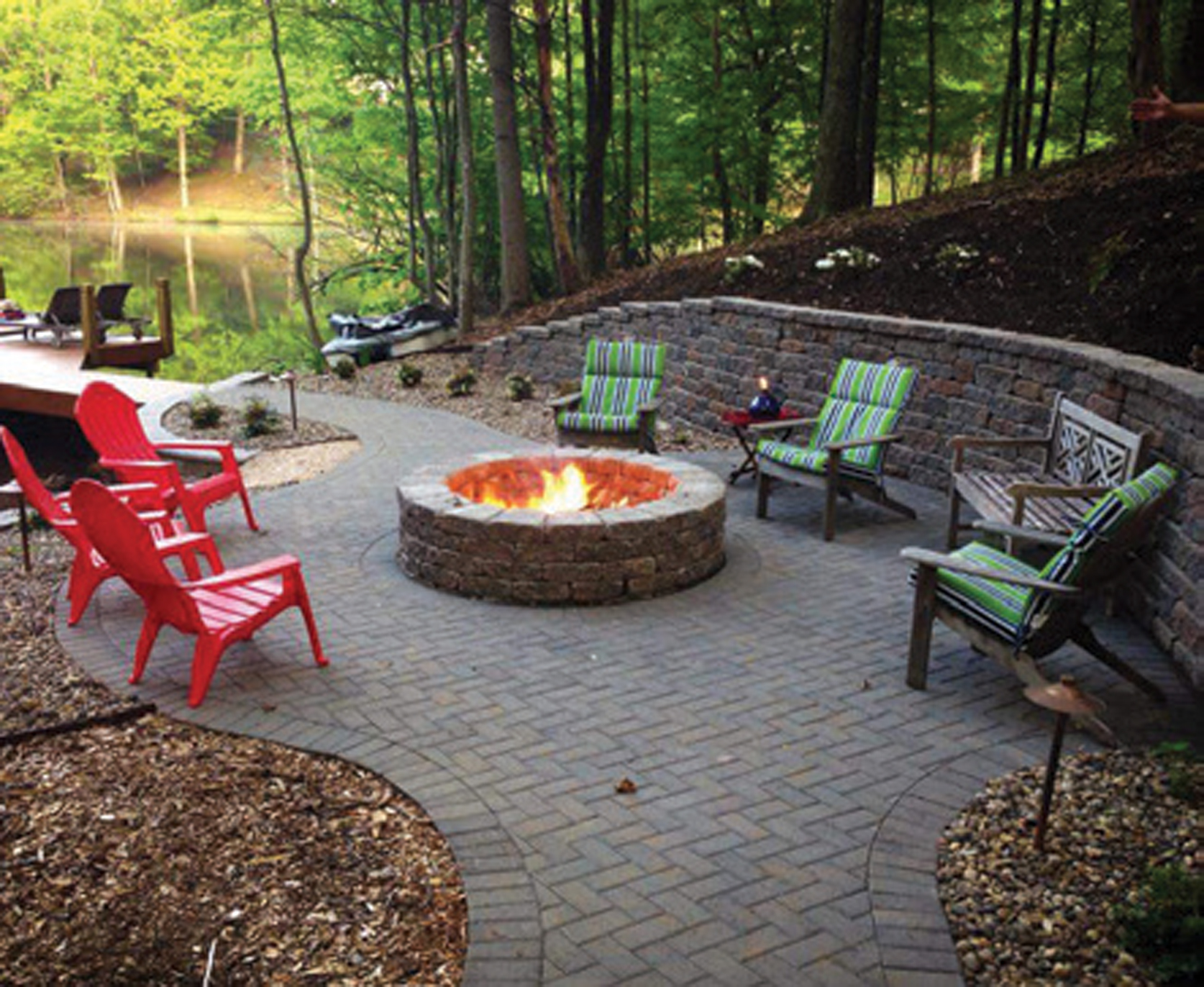 Where to place the firepit is also a big decision. Templeton says that during the design process he takes into consideration how close it is to the house or surrounding trees. On a similar note, Maslow comments, “You don’t want to put it on or around combustible surfaces, like composite decking or wood decking.” Maslow also stresses the importance of ventilation, which can be accomplished by making sure that your firepit or fireplace has the proper draw and airflow. To ensure safety, choose placement wisely.
Where to place the firepit is also a big decision. Templeton says that during the design process he takes into consideration how close it is to the house or surrounding trees. On a similar note, Maslow comments, “You don’t want to put it on or around combustible surfaces, like composite decking or wood decking.” Maslow also stresses the importance of ventilation, which can be accomplished by making sure that your firepit or fireplace has the proper draw and airflow. To ensure safety, choose placement wisely.
Location can also affect the cost. Maslow notes that it’s important to consider the form of the existing site/landscape because “the harder it is to get to the area, typically the more expensive it is because more labor is involved.” The more labor-intensive a project, the higher the cost for that project.
A suggested safety measure when starting, stoking and maintaining a fire is to keep some source of water close by, whether a hose or bucket of water. If there is an emergency, it’s important to be able to extinguish the fire. Gas-burning fire features require an emergency gas shut-off.
Ultimately, by keeping intent, budget, space and safety in mind, homeowners can make the right choices for their fiery design.
Enlisting A Professional
Obviously, there are DIY options for firepits, but Maslow says that “if people are not sure what they want…they should reach out to a professional.” Indeed, a professional in the landscaping business often offers full-service options, from planning and design to execution and completion.
Once a homeowner decides to hire a professional, the professional can help guide the homeowner through the entire process. Maslow suggests “work[ing] with somebody who has some experience, a proven track record, who can show the client different projects and scenarios to help ensure that their finished product is a success.”
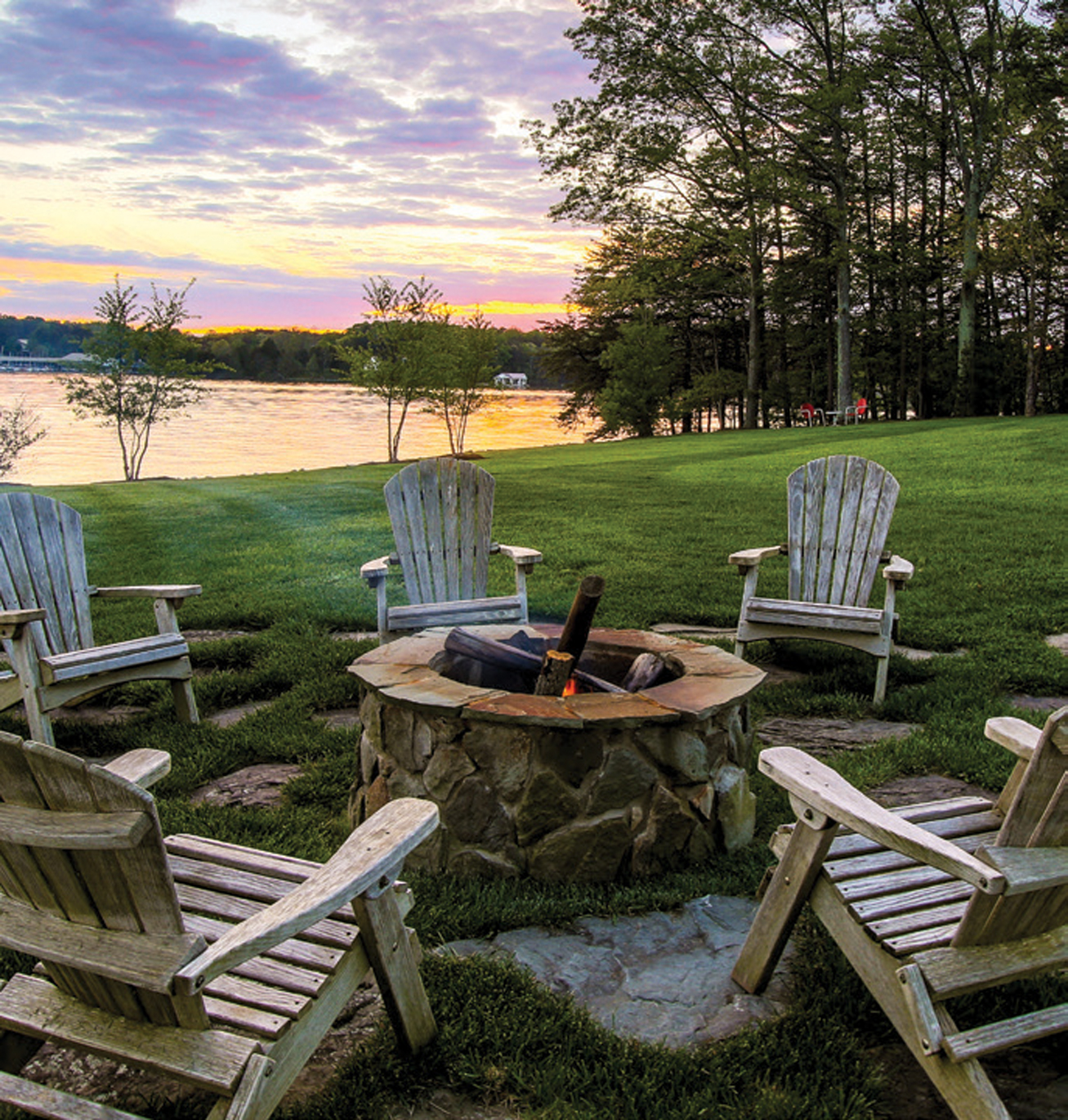 Planning and Design
Planning and Design
Homeowners must have a plan for their project. From a professional standpoint, Maslow stresses, “You should never, ever start a project without a detailed plan.” The flow of people, space and furniture placement are a few considerations when devising a plan. Maslow says, “Every plan starts with questions to the client about what they’re looking for, what their goals are, and what they’re trying to accomplish.”
Similarly, Templeton notes that it’s important for the professional to view the interior of the home to get a feel for the homeowner’s style. The hardscape, as an extension of the homeowner’s taste, should match the exterior of the home as well. By viewing the interiors and existing exterior structures, the designer is able to maintain a level of continuity and congruity from the inside out.
Post planning and design, clients can choose their level of involvement, but once the construction begins, according to Templeton, “It’s usually not a tremendous amount of involvement with the client, because we try to line up all of the colors, the stone selections, the layout and all that well ahead of time.” This, he adds, makes for “a very seamless process once we get started.”
Many designers consider form and function to be top priorities in the design process, and a fire feature is no exception. Not only does planning for the fire feature occur, but planning for the entire outdoor area surrounding the fire feature is critical as well. For example, designers plan for furnishings, such as tables, chairs, and benches, to ensure that the area is comfortable and functional.
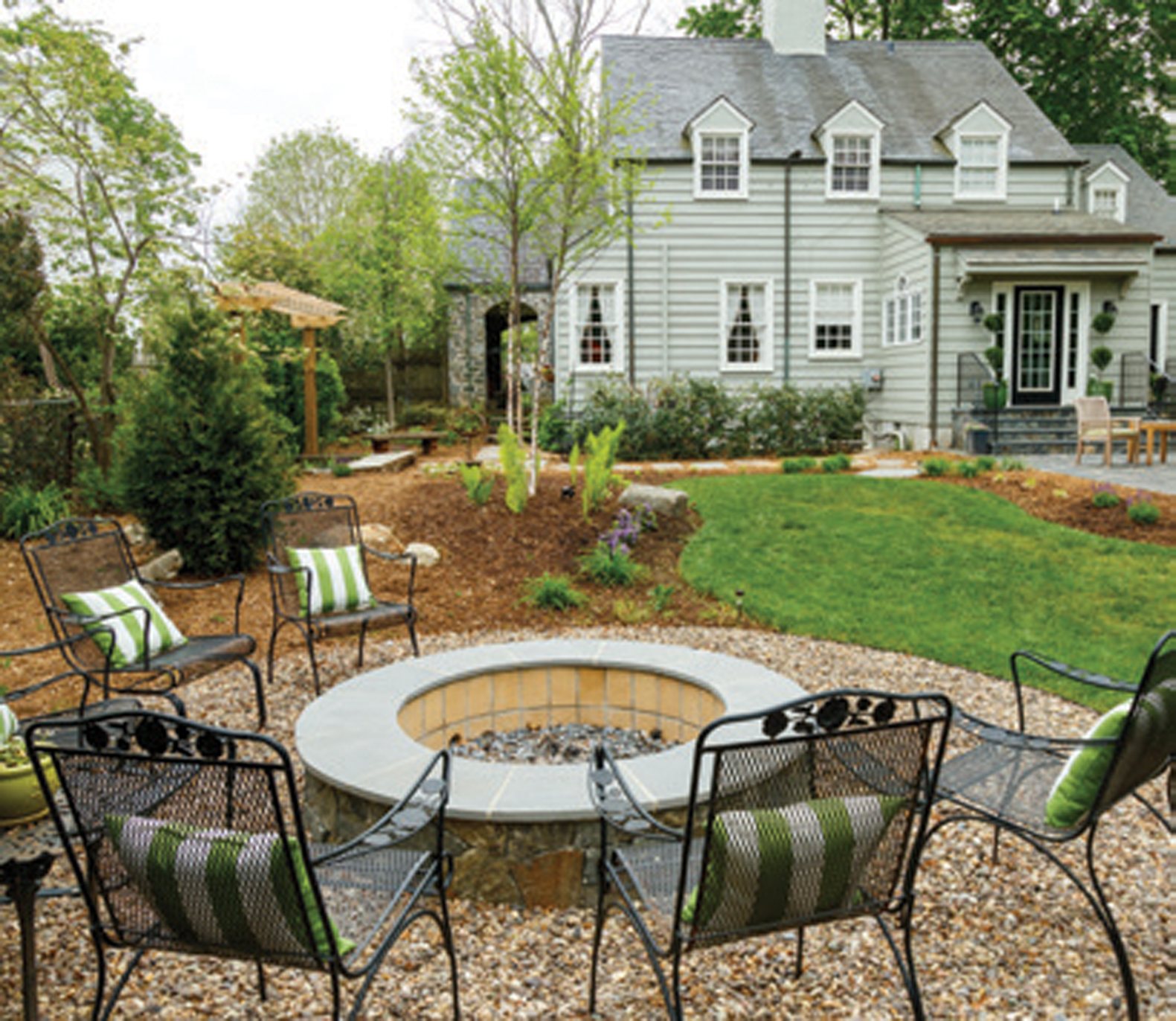 Trends
Trends
“Firepit areas are a fairly large trend right now…whether it be one that’s built-in or one that’s portable…people are just looking for something with fire,” says Templeton. Adding another element, specifically water, to the mix makes an outdoor space even more accommodating.
Templeton says that his business has been installing features that include disappearing waterfalls and bubbling fountains. Both types of water features, he adds, create “the sound of the water and the look without all the maintenance that big ponds create.” Water features add a sense of tranquility and can juxtapose with fire features to keep the space alive and vibrant.
Fire is enthralling to watch and enhances an outdoor space, but it must be handled with care. Gathering all the necessary information is the most important tool when choosing to add a firepit or other fire feature to an outdoor space. Knowing your options and consulting someone fluent in design ideas will help you begin on the right track. Because there are so many positive reasons to incorporate this fierce element, choosing to utilize fire in some way, shape or form in an outdoor space is almost second nature.
CLC Inc., diy, fire features, firepits, fireplaces, hardscapes, outdoor space, Southern Landscape Group
